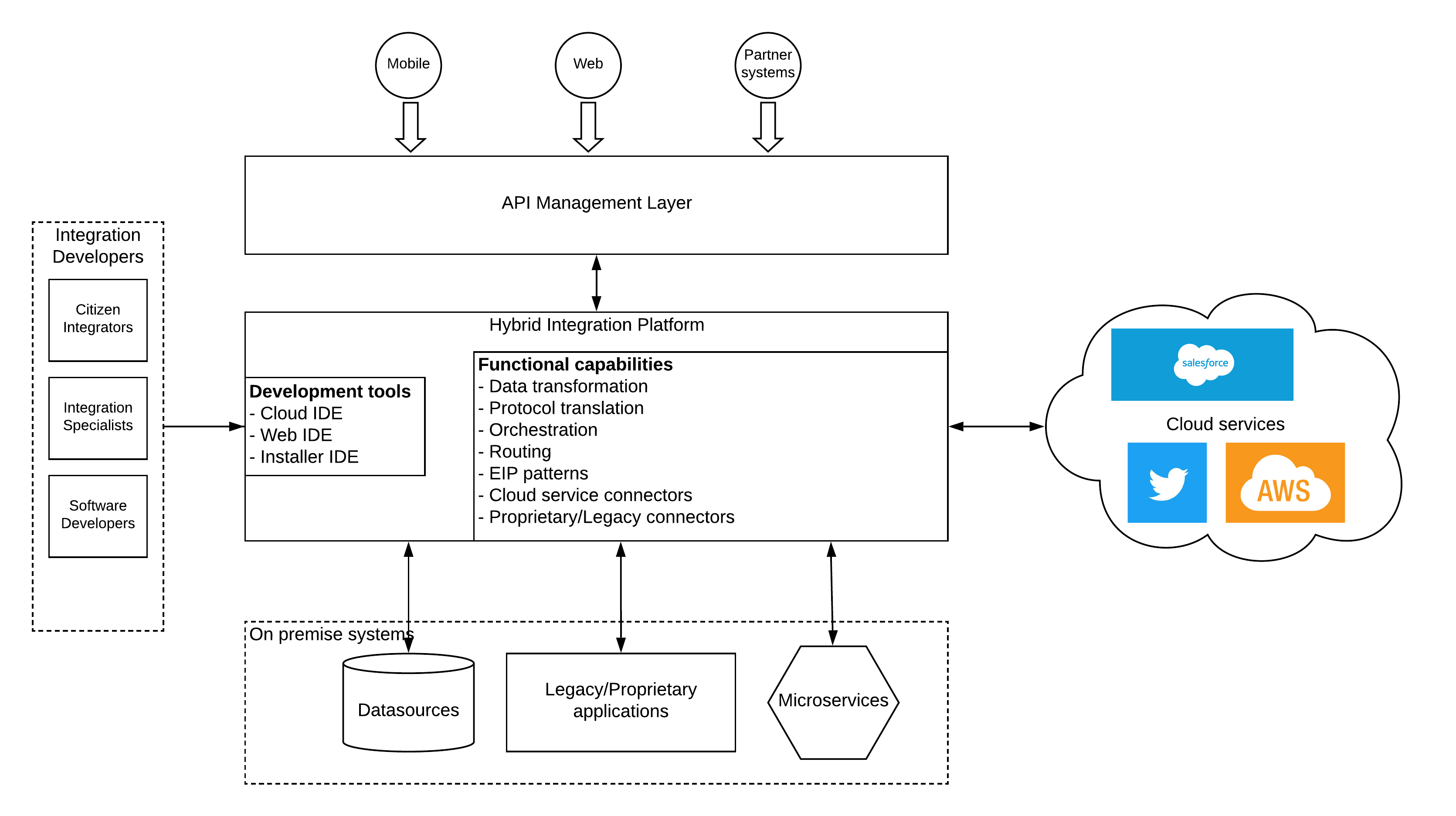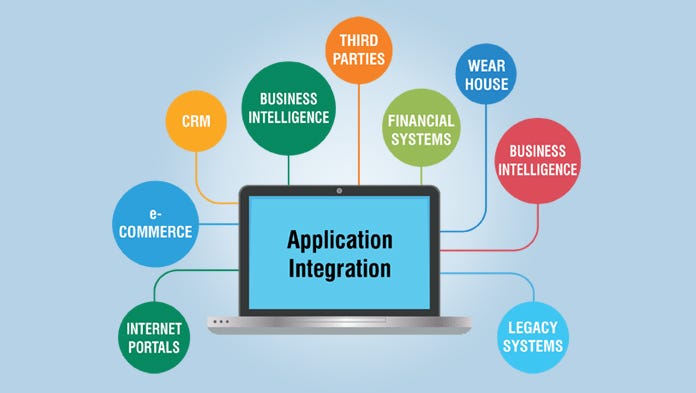As the name implies a hybrid integration platform HIP is a unification of various technologies into a single framework. The HIP is the home for all functionalities that ensure the smooth integration of multiple digital transformation initiatives in an organization.
 Hybrid Integration Platform Connect Enterprise Saas Iot Applications
Hybrid Integration Platform Connect Enterprise Saas Iot Applications
Learn why the fundamental shift of B2B integration is less about how its done and more about who needs to get it done.

Hybrid integration platform. Now design develop deploy and manage integrations with ease be it any service platform process application or data within or across organizations. SAP Integration Suite is SAPs Hybrid Integration Platform for Intelligent Enterprises. The Fiorano Hybrid Integration Platform HIP allows integration specialists and application developers from organizations to rapidly deploy a lightweight powerful and scalable IT infrastructure backbone enabling asynchronous information exchange across the extended enterprise.
Cleos hybrid integration platform capabilities ensure businesses can sync critical data flows creating. Leveraged by large B2B enterprises Hybrid Integration Platform provides pre-built connectors business rules mapping engine transformation and guaranteed delivery capabilities to facilitate development of business workflows API management and API integration. What Is a Hybrid Integration Platform.
Integration Suite Hybrid Integration Platform for SAP Integration Suite is the recommended integration toolkit to simplify and accelerate Integration for our customers for both SAP as well as 3 rd party integration scenarios. Based on machine-learning algorithms and a database of integration artefacts the Integration Advisor will provide the integration developer interface and mapping proposals based on his requirements country use case industry. Usually companies integrate legacy infrastructure servers databases warehouses with cloud solutions IaaS PaaS SaaS.
A hybrid integration platform HIP is an architectural approach to connecting and integrating private cloud systems with SaaS applications and cloud environments and leverages best-of-breed solutions to support flexible business models. What is a hybrid integration platform. Hybrid integration platforms HIPs securely and seamlessly integrate on-premises and cloud-based applications.
Organizations need to move toward what Gartner calls a hybrid integration platform or HIP. These platforms are built to connect cloud and on-premise data and applications. See fig 2 below.
The hybrid integration platform HIP is a framework of on-premises and cloud-based integration and governance capabilities that enables differently skilled personas. The hybrid integration platform HIP is a framework of on-premises and cloud-based integration and governance capabilities that enables differently skilled personas integration specialists and non-specialists to support a wide range of integration use cases. A cloud native hybrid integration platform for connecting and collaborating with any platform any application anywhere.
A Hybrid Integration Platform also called HIP allows your IT to fast-track innovation enhance efficiency and lower the risk factors in accomplishing integration. A hybrid integration platform like webMethods can reduce the cost of developing testing deploying and maintaining the ever-expanding definition of hybrid integrations. Introducing an HIP means that organizational models must also change to keep pace.
It looks to bring together a cohesive set of integration and data management tools to bridge on-premises and cloud. With a hybrid architecture that encompasses out-of-the-box features to integrate data residing in legacy systems databases data lakes and warehouses with modern Software as a Service SaaS Platform as a Service PaaS and Business-to-Business B2B applications this hybrid data integration solution allows business users simplify the. According to Ovum a hybrid integration platform is a cohesive set of integration software middleware products enabling users to develop secure and govern integration flows connecting diverse applications systems services and data stores as well as enabling rapid API creationcomposition and lifecycle management to meet the requirements of a range of hybrid integration use cases.
These platforms have built-in capabilities to integrate with most of the well-known cloud services as well as on-premises applications using the support for standard and proprietary protocols with a minimal amount of configuration. A Hybrid Integration Platform HIP provides a framework for laying down a comprehensive integration and data management strategy across the enterprise in the ever-evolving hybrid multi-cloud world. So here is a selection of services that customers should keep in mind when looking at a holistic hybrid integration platform.


